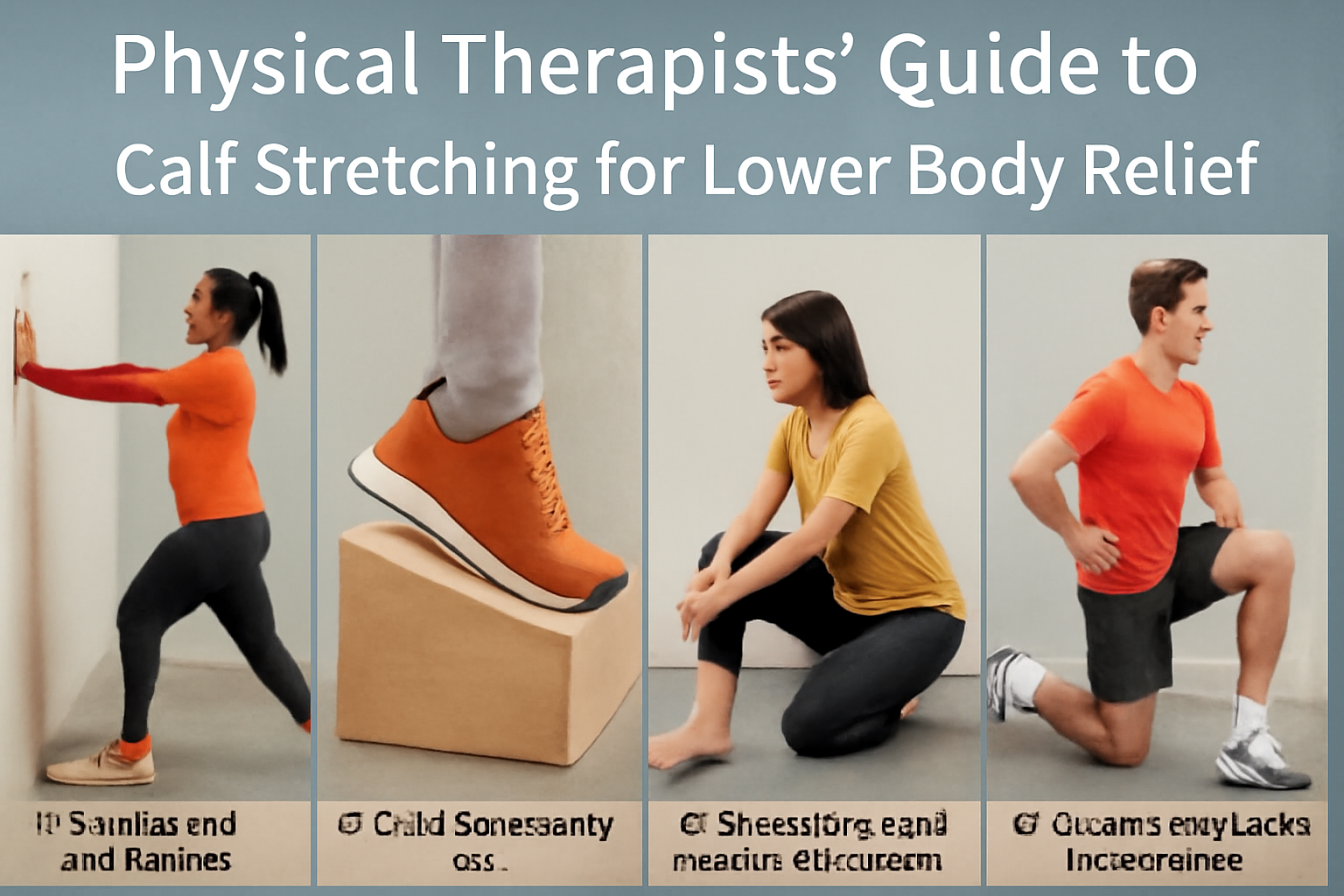
🧭 บทนำ: ทำไม “การเคลื่อนไหว” จึงสำคัญต่อหัวใจ
องค์การอนามัยโลก (World Health Organization: WHO) และสมาคมหัวใจอเมริกัน (American Heart Association: AHA) แนะนำให้ผู้ใหญ่ทำกิจกรรมแอโรบิกระดับปานกลางอย่างน้อย 150–300 นาที/สัปดาห์ หรือกิจกรรมหนักอย่างน้อย 75–150 นาที/สัปดาห์ เพื่อประโยชน์ด้านหัวใจและหลอดเลือด พร้อมเสริมการฝึกกล้ามเนื้ออย่างน้อย สัปดาห์ละ 2 วัน ซึ่งสัมพันธ์กับการลดอัตราป่วยและตายจากโรคหัวใจอย่างมีนัยสำคัญ. PMCWHO IRISwww.heart.org+1
📐 หลักการวางแผนการออกกำลังกาย (FITT) และการประเมินความหนัก
- ความถี่–ระยะเวลา–ความหนัก (frequency–time–intensity): ตั้งเป้าให้ได้ตามเกณฑ์ WHO/AHA ด้านบน โดยเพิ่มความหนักและระยะเวลาแบบค่อยเป็นค่อยไป (progression). PMCwww.heart.org
- การประเมินความหนักแบบ “การสนทนา” (talk test): ระดับปานกลางคือ “พูดได้แต่ร้องเพลงไม่ได้”; ระดับหนักคือ “พูดได้เพียงไม่กี่คำแล้วต้องหยุดหายใจ”. CDC+1
- อัตราการเต้นหัวใจเป้าหมาย (target heart rate): ปกติระดับปานกลางอยู่ที่ ~50–70% ของอัตราการเต้นหัวใจสูงสุด (maximum heart rate) และระดับหนัก ~70–85% (อ้างอิงเพื่อการกำกับตนเองเบื้องต้น). www.heart.org
- กรณีใช้ยาเบต้า-บล็อกเกอร์ (beta-blocker): ยานี้ทำให้อัตราการเต้นหัวใจช้าลง จึงควรประเมินความหนักด้วยอาการและ “talk test” หรือใช้อัตราการเต้นหัวใจเป้าหมายที่แพทย์ประเมินระหว่าง การทดสอบสมรรถภาพด้วยการออกกำลังกาย (exercise stress test). www.heart.org
🏃♀️ ประเภทของการออกกำลังกายที่เป็นมิตรกับหัวใจ
🫀 แอโรบิก (aerobic/endurance)
เดินเร็ว ปั่นจักรยาน ว่ายน้ำ หรือจ็อกกิง ช่วยเพิ่มสมรรถภาพหัวใจ–ปอด ลดความดันโลหิต และลดความเสี่ยงโรคหัวใจเมื่อทำได้ตามเกณฑ์เวลาที่แนะนำ. PMCwww.heart.org
🏋️♂️ ฝึกกล้ามเนื้อ (resistance/muscle-strengthening)
การฝึกแรงต้าน อย่างน้อยสัปดาห์ละ 2 วัน ช่วยลดปัจจัยเสี่ยงเมตาบอลิก และเมื่อรวมกับแอโรบิกให้ประโยชน์ต่อความเสี่ยงโรคหัวใจ–หลอดเลือดมากกว่าทำชนิดเดียว. เครือข่ายเมตาอะนาลิซิสล่าสุดยังชี้ว่าการฝึกหลายรูปแบบลดความดันพักได้จริง. www.heart.orgprofessional.heart.orgPubMed
🧱 ฝึกคงค้างกล้ามเนื้อแบบไม่เคลื่อนข้อต่อ (isometric)
งานเครือข่ายเมตาอะนาลิซิสในวารสาร British Journal of Sports Medicine พบว่า ท่ากำแพงนั่ง (wall-sit) และท่าเกร็งค้างอื่น ๆ มีประสิทธิภาพเด่นในการลด ความดันซิสโตลิก/ไดแอสโตลิก เมื่อเทียบกับหลายชนิดการฝึกอื่น. เหมาะเป็น “เข็มขัดอีกเส้น” สำหรับผู้ที่ต้องการควบคุมความดัน. British Journal of Sports Medicine
⚡ การฝึกเป็นช่วงความเข้มสูง (high-intensity interval training: HIIT)
HIIT ช่วยเพิ่ม ปริมาณออกซิเจนสูงสุด (VO₂peak) และสมรรถภาพหัวใจ–หลอดเลือดได้ดีในหลายกลุ่มประชากร ทั้งผู้มีโรคหัวใจและผู้สูงอายุ เมื่อดำเนินการอย่างปลอดภัยภายใต้คำแนะนำที่เหมาะสม; บางการทบทวนชี้ว่า HIIT ได้ผลไม่ด้อยกว่า หรือเหนือกว่า การเดิน/วิ่งต่อเนื่องระดับปานกลาง (moderate-intensity continuous training: MICT) ในการเพิ่มสมรรถภาพ. NaturePMC
🧘 ยืดเหยียด–การทรงตัว (flexibility & balance)
แม้ผลต่อโรคหัวใจโดยตรงอาจน้อยกว่าแอโรบิก/แรงต้าน แต่ช่วยเพิ่มการเคลื่อนไหว ลดการหกล้ม และหลักฐานบางส่วนพบว่าการยืดเหยียดสม่ำเสมอลด ความแข็งตัวของหลอดเลือด (arterial stiffness) และลดความดันไดแอสโตลิกเล็กน้อย โดยเฉพาะในวัยกลางคนขึ้นไป. National Institute on AgingPMC
🗓️ ตัวอย่างโปรแกรม 2 ระดับ (อิงแนวทางสากล)
🌱 ระดับตั้งต้น (เริ่มออกกำลังกาย)
- แอโรบิก: เดินเร็ว 30 นาที/ครั้ง สัปดาห์ละ 5 วัน (รวม 150 นาที/สัปดาห์).
- แรงต้าน: สัปดาห์ละ 2 วัน ครอบคลุมกล้ามเนื้อหลัก 8–10 ท่า ท่าละ 8–12 ครั้ง.
- ยืดเหยียด/ทรงตัว: 2–3 วัน/สัปดาห์ หลังวอร์มอัพหรือหลังคูลดาวน์.
อิงคำแนะนำ WHO/AHA สำหรับปริมาณและความถี่. PMCwww.heart.org
🚀 ระดับก้าวหน้า
- แอโรบิก: วิ่งเหยาะ/ปั่นจักรยาน MICT 30–45 นาที/ครั้ง 3 วัน + HIIT 1 วัน (เช่น 4 ช่วง x 3–4 นาทีเข้มสูง คั่นพักเบา ๆ 2–3 นาที).
- แรงต้าน: 2–3 วัน/สัปดาห์ ปรับน้ำหนักให้อยู่ช่วง “เหลือแรงอีก ~2 ครั้ง” ในแต่ละเซ็ต.
- ยืดเหยียด/ทรงตัว: 3 วัน/สัปดาห์ (เพิ่มไทชิ/โยคะ).
โครงสร้างความหนักยึดตาม WHO/AHA และหลักฐานด้าน HIIT/MICT. PMCwww.heart.orgNature
🛡️ ข้อควรระวังและความปลอดภัย (เริ่มให้ถูก ลดเสี่ยงให้เป็น)
🩺 คัดกรองก่อนเริ่ม (preparticipation screening)
แนวทางวิทยาลัยเวชศาสตร์การกีฬาอเมริกัน (American College of Sports Medicine: ACSM) ปรับเกณฑ์คัดกรองให้ “เป็นมิตรต่อการเริ่มต้น” โดยพิจารณา 3 ปัจจัยหลัก: ระดับกิจกรรมปัจจุบัน, อาการหรือโรคหัวใจ–เมตาบอลิก–ไตที่มี, และความหนักที่ตั้งใจเริ่ม ทั้งนี้ส่วนใหญ่เริ่มออกกำลังกายระดับปานกลางได้อย่างปลอดภัย หากมีอาการผิดปกติต้องหยุดและประเมิน. PubMed
⚕️ ลดความเสี่ยงเหตุการณ์เฉียบพลันขณะออกกำลังกาย
เอกสารแถลงการณ์วิชาการของ AHA ระบุว่าเหตุการณ์หัวใจเฉียบพลันจากการออกกำลังกาย “พบได้น้อยมาก” และความเสี่ยงลดลงเมื่อความฟิตเพิ่มขึ้น ควรมีการวอร์มอัพ/คูลดาวน์และค่อย ๆ ไต่ระดับความหนัก โดยเฉพาะเมื่อเริ่ม HIIT หรือปริมาณมาก. AHA Journalsprofessional.heart.org
🚩 สัญญาณอันตรายที่ต้อง “หยุดทันที” และพบแพทย์
เจ็บแน่นหน้าอก (angina), เหนื่อยหอบผิดปกติ, หน้ามืดเวียนศีรษะ, ใจสั่นผิดจังหวะ เหงื่อออกท่วม/คลื่นไส้ — อาจเกี่ยวข้องกับกลุ่มอาการหลอดเลือดหัวใจเฉียบพลัน (acute coronary syndrome: ACS) หรือภาวะอื่น ควรหยุดกิจกรรมและขอความช่วยเหลือ. www.heart.org+1
🌡️ สภาพอากาศร้อน (heat safety)
ในอากาศร้อน/ชื้นมาก ให้เลี่ยงช่วงแดดจัด ดื่มน้ำสม่ำเสมอ วางแผนปรับตัวทีละน้อย (acclimatization) และเฝ้าระวังตะคริวจากความร้อน/เพลียแดด/ลมแดด ตามคำแนะนำของศูนย์ควบคุมและป้องกันโรคแห่งสหรัฐอเมริกา (Centers for Disease Control and Prevention: CDC). CDC+1
💊 เมื่อใช้ยาที่กระทบอัตราการเต้นหัวใจ
ผู้ที่ใช้ เบต้า-บล็อกเกอร์ (beta-blocker) อาจไม่สามารถใช้อัตราการเต้นหัวใจเป็นตัวกำกับความหนักได้ตามปกติ ควรอาศัย “talk test” หรือการประเมินร่วมกับแพทย์/ผลการทดสอบสมรรถภาพ. www.heart.org
📉 ผลที่คาดหวังต่อสุขภาพหัวใจ (จากหลักฐานเชิงระบบ)
- ปริมาณกิจกรรมตามเกณฑ์ WHO/AHA เชื่อมโยงกับการลดอัตราป่วยและตายจากโรคหัวใจ–หลอดเลือดและทุกสาเหตุอย่างสอดคล้อง. PMCWHO IRIS
- การฝึกแรงต้านและการฝึกคงค้างแบบไอโซเมตริกช่วยลดความดันโลหิตพัก โดยไอโซเมตริก (เช่น wall-sit) มีประสิทธิภาพเด่นในงานเครือข่ายเมตาอะนาลิซิส. PubMedBritish Journal of Sports Medicine
- การมีส่วนร่วมใน โปรแกรมฟื้นฟูหัวใจด้วยการออกกำลังกาย (exercise-based cardiac rehabilitation: CR) ลดการตายจากหัวใจ เหตุการณ์ซ้ำ และการนอนโรงพยาบาล ในผู้ป่วยโรคหลอดเลือดหัวใจยุคการรักษาทันสมัย. PubMedCochrane Library
ข้อจำกัดสำคัญ: บทความนี้เป็นการให้ข้อมูลทั่วไป ไม่ใช่คำแนะนำทางการแพทย์เฉพาะราย หากมีโรคหัวใจ/ความดันโลหิตสูง/ใช้ยาเกี่ยวกับหัวใจ ควรปรึกษาแพทย์ก่อนเริ่มโปรแกรมใหม่เสมอ.
✅ สรุป: สูตรพื้นฐานที่ยั่งยืน
ผสมผสาน แอโรบิก + แรงต้าน + ยืดเหยียด/ทรงตัว ให้ได้ตามเกณฑ์เวลา 150–300 นาที/สัปดาห์ (หรือรูปแบบอื่นที่เทียบเท่า) เริ่มช้า–ไต่นุ่มนวล–เฝ้าสัญญาณอันตราย และปรับตามโรคร่วมหรือยาที่ใช้อยู่ เป้าหมายคือ หัวใจที่แข็งแรงขึ้น ความเสี่ยงโรคหัวใจ–หลอดเลือดที่ต่ำลง และคุณภาพชีวิตที่ดีขึ้น ตามหลักฐานปัจจุบัน. PMCwww.heart.org
📚 แหล่งอ้างอิงงานวิจัย/แนวทาง (เรียงตามหัวข้อ)
- แนวทางเวลา–ความหนัก: WHO Guidelines on Physical Activity and Sedentary Behaviour (2020); AHA Physical Activity Recommendations for Adults (อัปเดตหน้าเว็บปี 2024). WHO IRISwww.heart.org
- การประเมินความหนัก: CDC Measuring Physical Activity Intensity (talk test); AHA Target Heart Rates. CDCwww.heart.org
- แรงต้าน/ไอโซเมตริกและความดันโลหิต: BMJ network meta-analysis 2023; บทสรุป PubMed 2023. British Journal of Sports MedicinePubMed
- HIIT เทียบ MICT: Scientific Reports 2023; เมตาอะนาลิซิสผู้สูงอายุ 2025. NaturePMC
- ยืดเหยียด/สมดุล: สถาบันผู้สูงอายุแห่งชาติ สหรัฐฯ (National Institute on Aging: NIA) 2025; เมตาอะนาลิซิสผลของการยืดเหยียดต่อความแข็งตัวหลอดเลือด 2020. National Institute on AgingPMC
- คัดกรองก่อนเริ่ม–ความปลอดภัย: แนวทางคัดกรองก่อนเริ่มออกกำลังกายของ ACSM 2015; แถลงการณ์วิชาการ AHA 2020 ว่าด้วยเหตุการณ์หัวใจเฉียบพลันที่เกี่ยวกับการออกกำลังกาย. PubMedAHA Journals
- สัญญาณอันตราย/อาการเจ็บหน้าอก: AHA หน้าความรู้เรื่องกลุ่มอาการหลอดเลือดหัวใจเฉียบพลันและอาการเจ็บแน่นหน้าอกไม่คงที่. www.heart.org+1
- อากาศร้อนและการออกกำลังกาย: CDC Heat and Athletes และคำแนะนำป้องกันอันตรายจากความร้อน. CDC+1
- ยาเบต้า-บล็อกเกอร์กับการออกกำลังกาย: AHA How Do Beta-Blocker Drugs Affect Exercise? (ทบทวน 2024). www.heart.org
- ฟื้นฟูหัวใจด้วยการออกกำลังกาย (CR): Cochrane Review 2021 และรีวิวอัปเดต 2023. Cochrane LibraryPubMed
🏛️ หน่วยงานภาครัฐ/องค์การระหว่างประเทศที่เกี่ยวข้อง
องค์การอนามัยโลก (WHO) — แนวทางกิจกรรมทางกาย 2020; ศูนย์ควบคุมและป้องกันโรคแห่งสหรัฐอเมริกา (CDC) — การประเมินความหนักและความปลอดภัยในอากาศร้อน; สถาบันผู้สูงอายุแห่งชาติ (National Institute on Aging: NIA/NIH) — คำแนะนำการออกกำลังกายตามวัย. WHO IRISCDC+1National Institute on Aging
ข้อจำกัดสำคัญ: บทความนี้เพื่อให้ข้อมูลทั่วไป ไม่ใช่คำแนะนำทางการแพทย์เฉพาะราย หากมีโรคหัวใจ/ความดันโลหิตสูง/ใช้ยาเกี่ยวกับหัวใจ ควรปรึกษาแพทย์ก่อนเริ่มโปรแกรมใหม่เสมอ.










